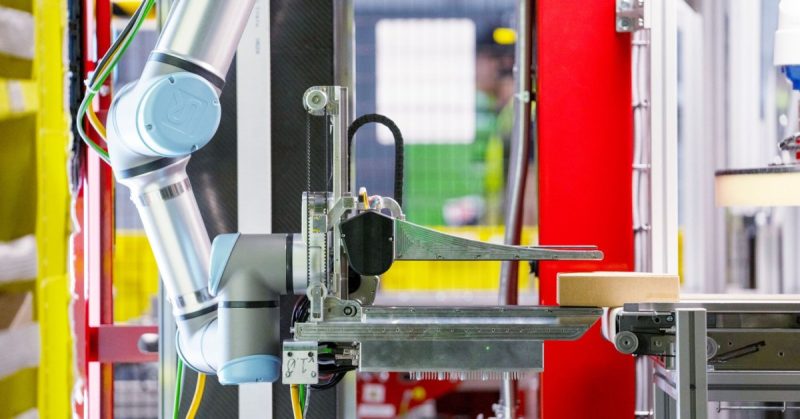
Amazon has unveiled Vulcan, a new warehouse robot boasting a groundbreaking feature: a sense of touch. This isn’t your average robotic arm; Vulcan uses AI and advanced sensors to delicately handle items, a significant leap forward in warehouse automation. The robot’s ability to ‘feel’ allows it to navigate the tight spaces of Amazon’s fabric-covered storage compartments, a feat previously requiring human dexterity. This means Vulcan can pick and stow approximately three-quarters of the items in Amazon’s warehouses, significantly increasing efficiency.
Vulcan’s arm, described by Amazon as resembling a ruler attached to a hair straightener, uses force sensors to precisely control its movements. It gently rearranges items within the compartments before adding new ones, avoiding damage. A second arm, equipped with a suction cup and AI-powered camera, ensures items are picked up one at a time, preventing accidental multiple selections. The entire system is powered by AI trained on physical data, including touch and force feedback, allowing it to learn from its own mistakes and improve over time.
Currently operational in Spokane, Washington, and Hamburg, Germany, Vulcan has already processed half a million orders. Its primary function is handling items at the top and bottom of the eight-foot fabric stacks, relieving human workers from strenuous bending and climbing, thus promoting worker safety and reducing injuries. While Vulcan can handle about 75% of Amazon’s inventory, it’s designed to work alongside human employees; it alerts a human worker when it encounters something it can’t manage.
Amazon emphasizes that Vulcan is not intended to replace human workers entirely. Aaron Parness, Amazon’s director of applied science, stated in an interview with CNBC that complete automation is not the goal. Instead, Vulcan is seen as a collaborative tool, enhancing the capabilities of the existing workforce. The company plans to expand Vulcan’s deployment across Europe and the United States over the next few years, joining the 750,000 robots already working in Amazon’s facilities. This innovative robot represents a significant step forward in warehouse robotics, showcasing a future where human and machine collaboration optimizes efficiency and safety.










